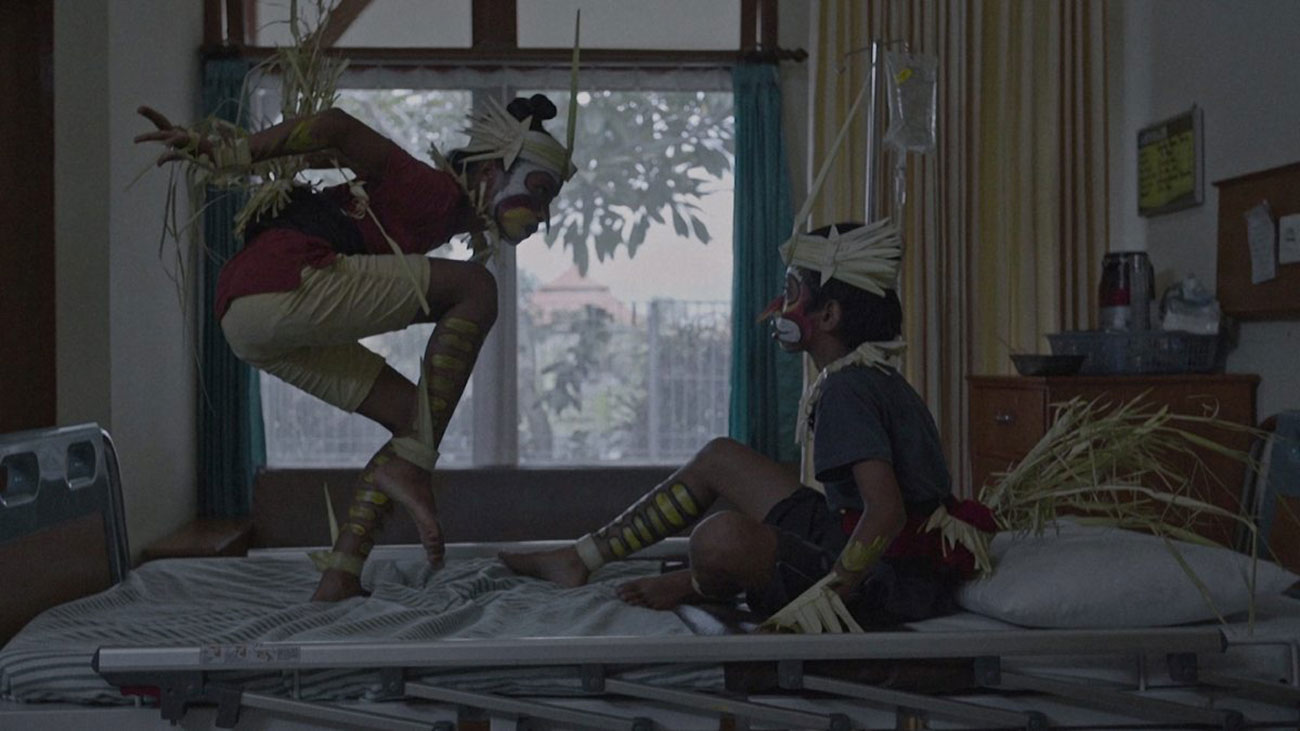Despite a seven year gap between her debut film, The Mirror Never Lies, and her latest feature narrative, The Seen and Unseen, Indonesian filmmaker Kamila Andini has kept plenty busy in that time. During her time away from feature filmmaking, Andini produced and released two short films: Following Diana and Memoria. Both short films received festival play worldwide and explored social issues affecting women in Southeast Asian countries – Following Diana on polygamous marriages in Indonesia and Memoria on sexual assault and trauma in Timor-Leste.
With The Seen and Unseen, Andini forgoes these social issues but her film is no less powerful despite very little happening. When the film opens, we see a young boy, Tantra (Ida Bagus Putu Radithya Mahijasena) lying on a gurney as nurses move him onto a hospital bed. He is gravely ill and the official diagnosis states that he does not have much time left in this world. His twin sister, Tantri (Ni Kadek Thaly Titi Kasih), looks on and for the remainder of the film we follow her both in reality and in her dreams as she grapples with the knowledge that her brother will soon be gone.
The Seen and Unseen is by no means a long film and clocks in at less than 90 minutes. Yet with Andini’s use of extended and uninterrupted takes, the film distorts our own sense of time and space in a way that coincides with Tantri’s grieving process. We also experience with Tantri her dreams and her imagination, surreal as they may appear. Here, Andini integrates facets of Indonesian folklore and culture to haunting effect and it is in these surreal fantasies where Tantri is reunited with her twin brother as well. Her dreams are long and they revel in the moment as both characters dance and play with each other.

But like all dreams, there comes a point where we need to wake up. At the peak of her dreams, Tantri is violently pulled back into the waking real world by Andini and is further reminded of the world she lives in; a world where death is inevitable. And when Tantri returns to reality, it hurts for her and for viewers too. This pain is wonderfully telegraphed by the young and talented lead, whom Andini draws a quietly moving performance from. Her character’s relationship also with her twin brother is equally palpable and genuine.
Equally impressive are The Seen and Unseen‘s visuals as captured by cinematographer Anggi Frisca who is reunited here with director Andini after collaborating together on Andini’s short film, Following Diana. When coupled with the director’s focus on Indonesian culture, Frisca’s camerawork reinforces the film’s dream-like qualities and turns Tantri’s reality into a world that feels so far away in her grief.
Though many films touch on death and trauma, few manage to capture what the passage of time feels like when one is stricken with despair and fewer communicate these feelings successfully from the exclusive perspective of a child. That The Seen and Unseen not only achieves this but also chooses to illustrate Tantra’s often lonely journey almost entirely through visual storytelling is bold, although it is a decision that feels wholly appropriate in context. For a child who might not be able to verbalise how they feel towards a complex concept like death, allowing this story to be told through pure cinema makes sense. And just as Andini achieved by giving marginalised women in Southeast Asia a means to voice their issues in her short films, she too is empowering Tantri – and by extension, all children – to be heard.
